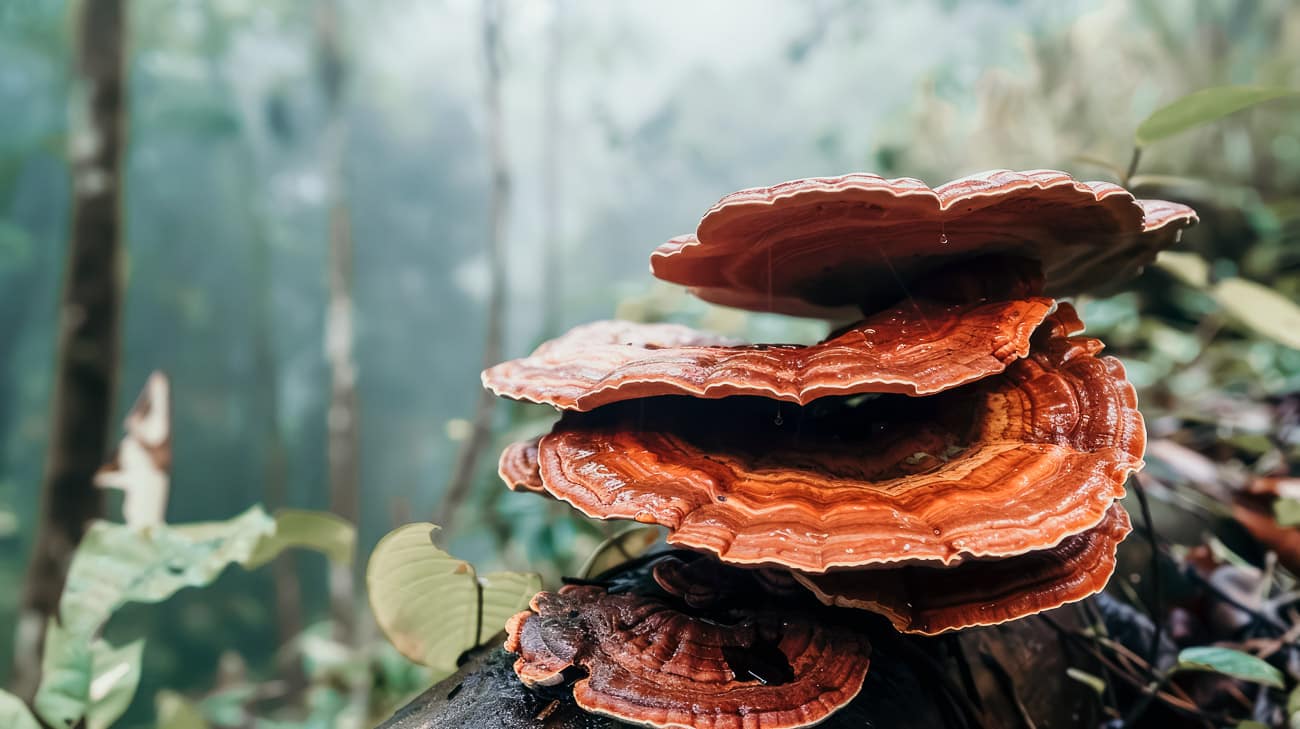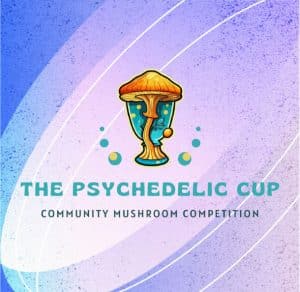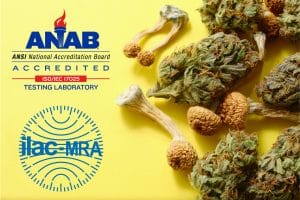Key Takeaways
- Blue bruising doesn’t mean that your psychedelic mushrooms are more potent.
- The “bruising” is actually a chemical reaction mediated by two enzymes, PsiP & PsiL.
- Psychedelic mushroom mycelium contains small amounts of psilocybin, hence it also bruises blue.
Mushrooms are one of the most fascinating organisms in the natural world. With their strange appearance and unique ability to produce spores, they have captivated the imaginations of people for centuries. One of the most intriguing aspects of mushrooms is their coloration. While most mushrooms are some shade of brown, some can turn blue when they are bruised or exposed to certain chemicals. But why do mushrooms turn blue? Let’s take a closer look at this phenomenon and how we perceive colors.
First off, what is color?
Understanding the color spectrum helps us to recognize many everyday phenomena. All colors of light visible to the human eye compose the visual portion of the electromagnetic spectrum, ranging in different wavelengths from 700 nanometers (red) to 400 nanometers (violet). When light strikes an object, absorbance occurs — different colors absorb different amounts of energy from light and reflect it back at us. The colors that we see depend on which colors are absorbed by an object and which are reflected back to our eyes for interpretation1. Understanding absorbance is also key when producing artificial colors — for example, digital displays produce cyan, magenta and yellow images by manipulating absorbance not just for those colors but for all visible colors of light.
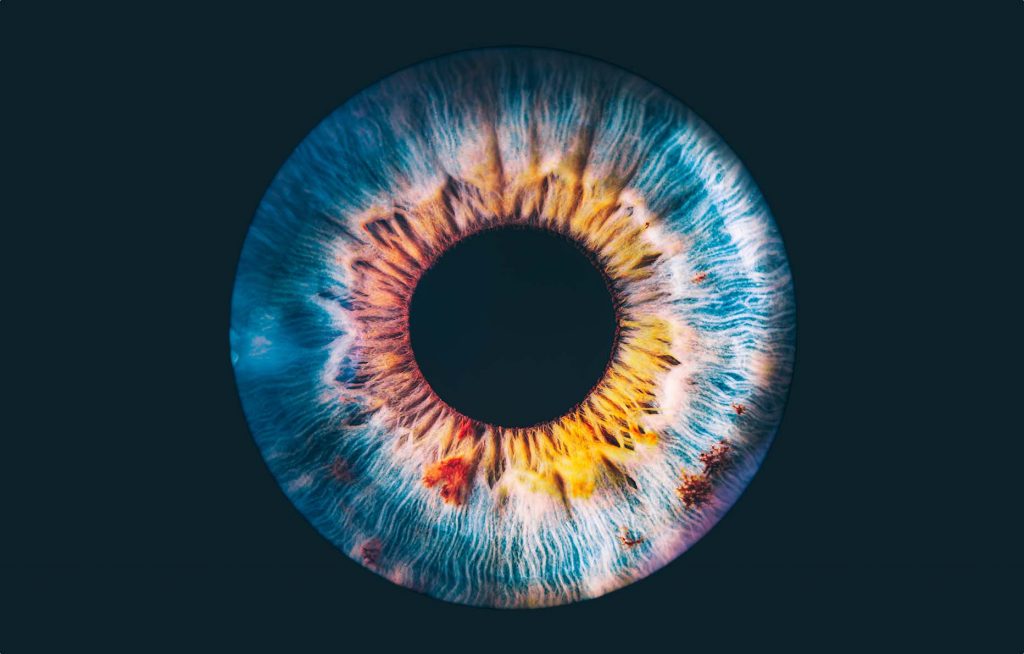
The blue coloration of mushrooms is the result of a chemical reaction
Have you ever noticed that when mushrooms are handled or extracted, they often turn bluish-green? This color change is due to a bluing reaction caused by certain chemical reactions. These reactions are a result of the enzymes in the mushroom cells reacting with oxygen and other molecules as they become damaged, thus producing bluish pigments. Understanding these bluing reactions can help us predict why some mushrooms turn bluish-green when exposed to heat and pressure during preparation. It is this variety of chemical reactions, then, that makes mushrooms appear to have a bluish hue.

Biochemically, what is the process?
Many popular psychedelics, including “magic mushrooms”, achieve their particular effects due to the presence of alkaloid compounds. Specifically, psilocybin and psilocin although more alkaloids may contribute psychoactive properties. An enzymatic reaction of psilocybin may be responsible for the blue color that can be observed in the stems and caps of certain varieties of magic mushroom when bruised or cut. A phosphatase enzyme (PsiP) breaks down psilocybin in the mushroom into psilocin2. A laccase enzyme (PsiL), then breaks down psilocin into other chemical forms with a blue hue, these other forms are essentially analogs of psilocin and can be thought of as two, three, or four psilocin bodies connected2.
Does this mean if my mushrooms are blue they are more potent?
No, not necessarily. Although the enzymatic reaction of psilocybin to psilocin via PsiP and PsiL creates a blue or green tint this is not necessary indicative of overall potency. For example, let’s consider mycelium, the root like structure from which mushrooms grow upon. This thread-like hyphae structure is not commonly thought of as psychoactive, yet will rapidly undergo the blue color change when bothered.
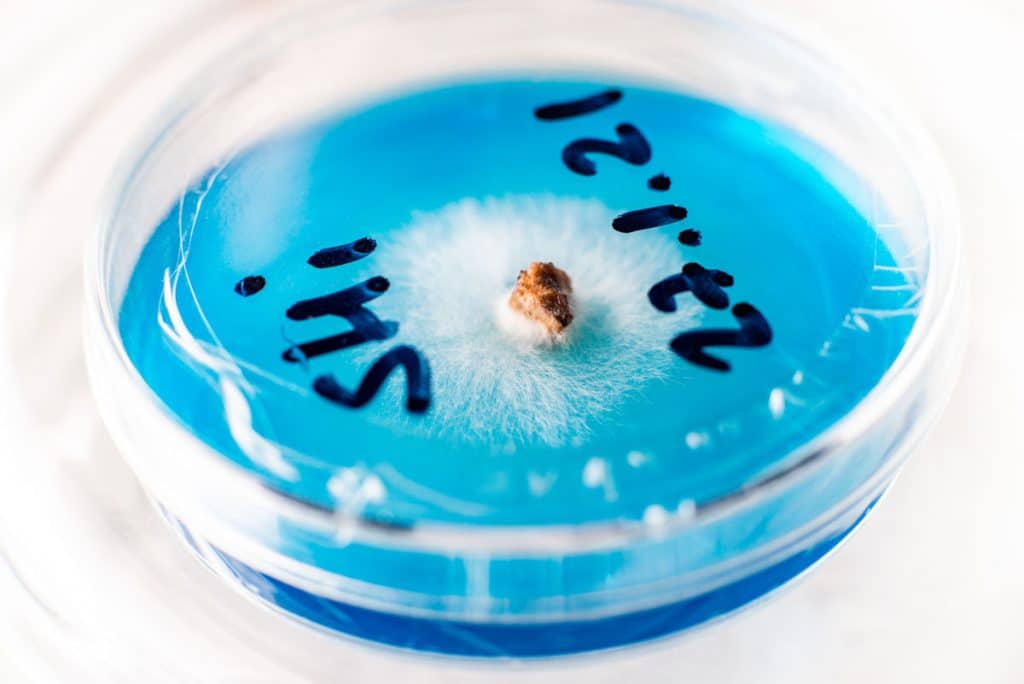
Additionally, regarding potency, psilocin degrades rapidly when compared to psilocybin which brings up the question, are the analogs of psilocin which are responsible for the blueish green color psychoactive themselves? And if they do induce psychoactive effects, what is their stability compared to the prodrug psilocybin? These questions have not been studied thoroughly and bring up items such as binding affinity. Binding affinity is the measure of how well chemicals bind to brain receptors and is the reason psilocybin is considered non-active, while psilocin is active.
Let’s Wrap This Up
The blue coloration of mushrooms is a result of a complex chemical reaction produced by the enzymes in mushroom cells reacting with oxygen and other molecules when damaged. The bluing reaction can likewise be observed in other psychedelic mushrooms such as “magic mushrooms” which contain psilocybin that breaks down into psilocin and analogs that produce the blue hue. These changes, however, do not indicate overall potency since psilocybin degrades quickly and binding affinity affects psychoactive properties making it difficult to determine any relationships between blue coloration and potency.
- Hardin, C. L. “A New Look at Color.” American Philosophical Quarterly, vol. 21, no. 2, 1984, pp. 125–33. JSTOR, http://www.jstor.org/stable/20014038. Accessed 9 Feb. 2023.
- C. Lenz, J. Wick, D. Braga, M. García-Altares, G. Lackner, C. Hertweck, M. Gressler, D. Hoffmeister, Angew. Chem. Int. Ed. 2020, 59, 1450.

